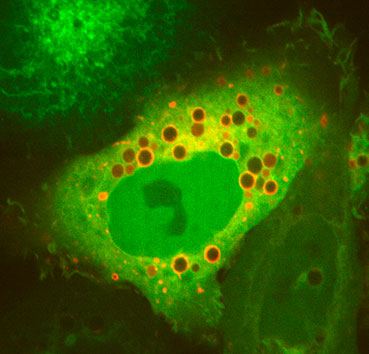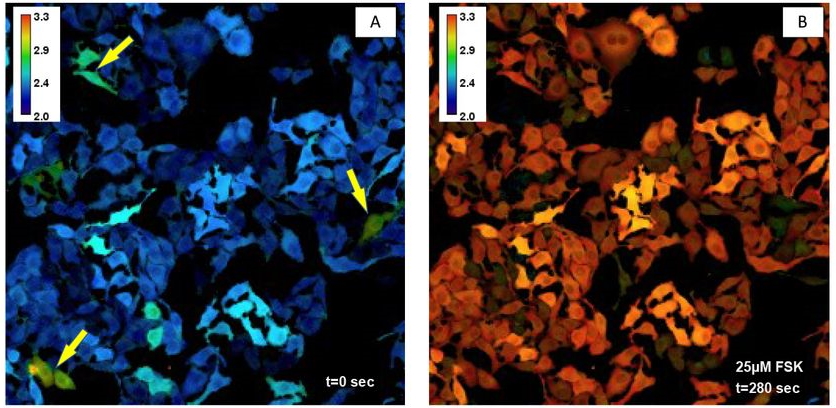Hot reads
Posted by FocalPlane, on 8 June 2021
Today we start a new monthly post. We have asked three researchers to propose their three favourite recently published papers (related to microscopy, of course).
You might be up to date with the recent literature in your field of research, but what about other disciplines? We hope this list, provided this month by Claudia Almeida, Joachim Goedhart and Stephen Royle, helps you find some interesting publications that were not included in your reading list.
These are the suggestions for this month:
Laboratory of neuronal trafficking in aging
CEDOC – Universidade Nova de Lisboa
- ‘Advanced imaging and labelling methods to decipher brain cell organization and function’ https://www.nature.com/articles/s41583-021-00441-z For a review on imaging of neurons.
- ‘Presynaptic activity and protein turnover are correlated at the single-synapse level’ https://www.sciencedirect.com/science/article/pii/S2211124721001558 Using Fluorescence microscopy and nanoscale secondary ion mass spectrometry (nanoSIMS) to measure local protein turnover.
- ‘De novo formation of early endosomes during Rab5-to-Rab7a transition’ https://journals.biologists.com/jcs/article/134/8/jcs254185/237792/De-novo-formation-of-early-endosomes-during-Rab5 For the live imaging and quantitative assessment of Rab5 to Rab7 switch, clarifying the dynamics of rabs recruitment to early endosomes.

Swammerdam Institute for Life Sciences – University of Amsterdam
- ‘Collective ERK/Akt activity waves orchestrate epithelial homeostasis by driving apoptosis-induced survival’ https://www.cell.com/developmental-cell/fulltext/S1534-5807(21)00436-6 Stunning movies, multiplex biosensor imaging, optogenetic perturbations, neat quantitative analysis, and new biological insight, this paper has it all.
- ‘The HaloTag as a general scaffold for far-red tunable chemigenetic indicators’ https://www.nature.com/articles/s41589-021-00775-w Hybrid fluorescent probes that combine a genetically encoded tag with an exogenously applied fluorophore have made substantial progress over recent years. This paper presents another leap forward, generating hybrid biosensors with flexible fluorophore choice to visualize calcium changes in cells.
- ‘Dynamic FRET-FLIM based screens of signal transduction pathways: a feasibility study’ https://doi.org/10.1101/2021.05.23.445328 Lifetime-based methods have several advantages over intensity based microscopy methods, but is lifetime based screening with FRET sensors feasible? This study presents a quantitative platform for screening of cAMP dynamics in single cells.

Centre for Mechanochemical Cell Biology
Warwick Medical School – University of Warwick
- ‘Morpho-functional characterization of the endo-lysosomal system by high-throughput correlative light-electron microscopy’ https://www.biorxiv.org/content/10.1101/2021.05.21.445146v1 This paper demonstrates that CLEM can be used in place of immunoEM to identify distinct stages of the endo-lysosomal system by the presence of well-established molecular marker proteins.

- ‘Bimodal Endocytic Probe for Three-Dimensional Correlative Light and Electron Microscopy’ https://www.biorxiv.org/content/10.1101/2021.05.18.444466v1 A useful CLEM probe for a wide range of 2D and 3D EM applications: Tokuyasu cryosections, resin-embedded material, and cryo-EM.
- ‘STED super-resolution imaging of membrane packing and dynamics by exchangeable polarity-sensitive dyes’ https://www.biorxiv.org/content/10.1101/2021.06.05.446432v1 A new membrane dye, which is remarkably resistant to photobleaching, is developed (based on Nile Red) and enables high resolution 3D-STED imaging of plasma membrane events.


 (1 votes, average: 1.00 out of 1)
(1 votes, average: 1.00 out of 1)